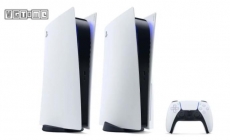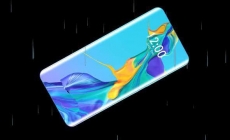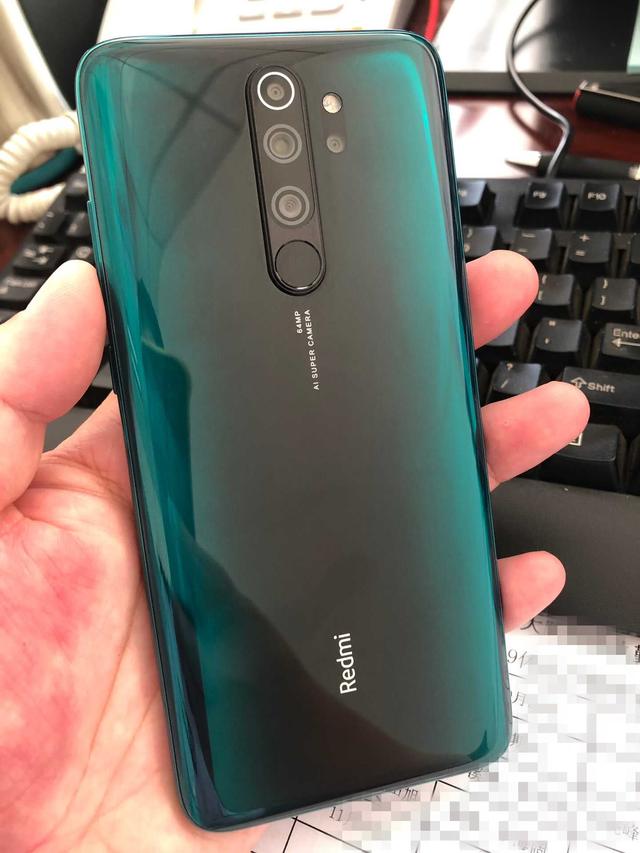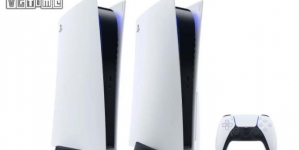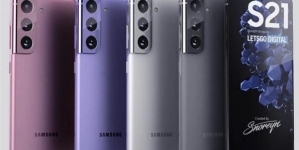-
Samsung Buds Pro wireless noise canceling headphones released: 28 hours of battery life - January 16, 2021
-
Mi 8-inch folding screen real machine spy photos overlap: internal folding design, equipped with 100 million pixel camera or debut in spring - January 16, 2021
-
New member of the four-second club, Lynk & Co’s ZERO concept production car starts dynamic testing - December 12, 2020
-
Spike 99% of the models Tesla concept bikes exposed! - December 12, 2020
-
PS5 becomes the first console in the United States with the highest monthly sales and sales - December 12, 2020
-
Samsung will launch a special protective case to support S21 Ultra to accommodate S Pen - December 12, 2020
-
iOS14.3 will be released soon, Apple Music will support album artwork animation - December 12, 2020
-
The peak of the work, four camera like the emperor: Mate 30 PRO out of the box - October 8, 2019
-
Huawei P40 design is more radical, rear five-shot lens, 100 million pixels impact DxO list? - October 8, 2019
-
Apple broke 100 million in a minute, Huawei broke 500 million in one minute, but Mate30 lost to iPhone11. - October 8, 2019
AMD: On July 7, you can buy the world’s first 7nm desktop computer
Turning over is not news for AMD, they are already crazy. At this point in time, if you tell you that you can buy the world’s first desktop full-blood 7nm process CPU in two months, you will surely convince a large number of people who are still watching Intel’s performance, the latter’s Although 10nm is more scientific and more efficient, the frequency is higher, but it can only be seen as too anxious, which has become an opportunity for AMD.
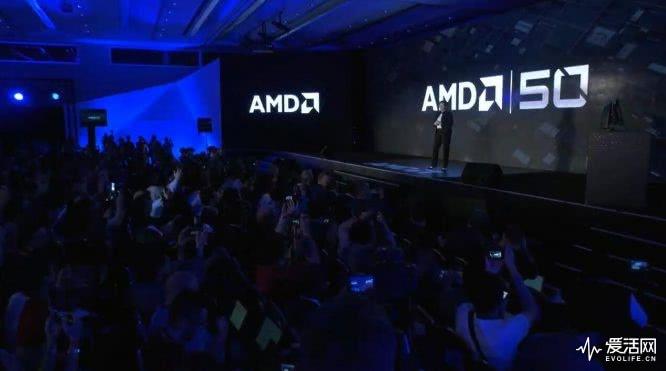
In the opening speech of Computex 2019, AMD made three punches, from cloud computing to graphics cards and back to high-performance desktop processors. Like the raging tide, Intel has already bought n-year 14nm breakwaters. From the ppt, Intel I have to be punched out of a few gaps.
Second Generation EPYC: High Performance Cloud Computing Certification
AMD, which is turning to the 7nm process, naturally does not dare to neglect the most intensive places in the highest-end computing. They have already conquered many service providers in cloud computing with lower computing costs, and now they are almost completely controlled by Intel. In high-performance cloud computing, AMD has achieved a breakthrough. Microsoft Azure HB virtual machine cloud chose EPYC, which will be the first high-performance cloud computing EPYC server, which is a breakthrough for AMD.
In order to continue to promote the layout of this big money market, the second generation EPYC, the Zen 2 CPU codenamed Rome, is ready to go. It will be built using TSMC’s 7nm process. It can be configured with up to 64 Zen 2 cores and supports Compute/IO and PCIe. 4.0 bus, the overall computing performance has improved a lot, the listed protein modeling and molecular dynamics related calculations on the ppt are about 30% faster than Intel’s Xeon 8280.
AMD knows that most people present are not particularly concerned about this market level, so they quickly passed the introduction of the second generation EPYC, which will be available in the third quarter of this year.
Radeon RX5700: New Architecture New Power
The second hit of the 7nm combination punch is the graphics card. Last week, there was a news that AMD had prepared more than one card, but Su Ma seems to only intend to disclose the Radeon RX5700 today.
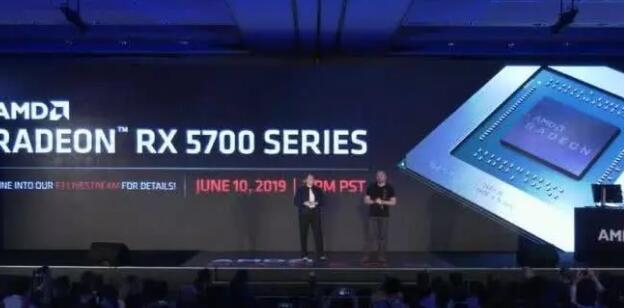
The Radeon RX5700 is also built on a 7nm process and supports the PCIe 4.0 bus. The new computing unit design brought by the Navi core improves the IPC of the GPU, which improves the co-frequency performance of the Vega graphics card by 25% and the power performance by 50%. And this band A card will use GDDR6 memory to focus on the memory bottleneck.
Not only that, AMD announced a new game computing architecture Radeon DNA, specifically for the game type of load, it is not known that this is just a GCN name change, or a new architecture but parallel with the original GCN, let the latter focus In calculations, perhaps AMD wants to manually separate mining applications and game uses from the architectural level, making mine fluctuations less likely to affect the game graphics market. After all, AMD has always been the hardest hit area.
The scene made a simple Radeon RX5700 directly against the RTX 2070 demo, the game chose “Strange Brigade”, AMD graphics card in the demo about 10% frame rate advantage, but still does not have light chasing may make it in The selling point will still be weaker than the N card.
The RX5700 will be available in July, and more technical details and listing pricing will be left to their E3 event announcement. In addition, AMD chose the Radeon RX5000 series naming to commemorate their 50th anniversary this year.
By the way, AMD will of course mention that the next-generation game console PS5 will be driven by the third-generation Ryzen CPU and Navi GPU, which is a very secure order and revenue.
The third generation of Ryzen: once again fully rolled? !
This is the most important announcement today. The third generation of Ryzen, Zen 2 architecture, the world is staring at whether AMD can bring a higher level of competitive pressure to Intel. From the announcement, Intel really has to be nervous.
A discussion with the GPU, the third generation of Ryzen uses the Zen 2 core to build TSMC’s 7nm process, and the interface continues to use AM4. It will be combined with the GPU to build the world’s first full PC platform supporting PCIe 4.0. Zen 2 cores have doubled the cache compared to Zen and Zen+, and floating-point computing performance has doubled. The most important IPC of modern CPUs also has a 15% improvement, and it costs zero on power.
AMD today launched the third generation of Ryzen a total of three, the top is Ryzen 9 3900X, through two small chips together, it once again increased the core thread limit of mainstream computing to 12C/24T, the frequency and overclocking is 3.8 At GHz/4.6GHz, the CPU has a total of 4MB L2 cache and 64MB L3 cache. The TDP is “only” 105W.
Why is it only? It is 165W with its benchmark Intel Core i9-9920X… AMD Live and the imaginary enemy ran its favorite Blender, which took 32 seconds faster than the opponent, 6 seconds, and reflected on the chart Cinebench R20 Ryzen 9 3900X They were able to win 14% and 8% on single-threaded and multi-threaded respectively, and AMD once again won on ppt.
Looking down is the Ryzen 7 3800X and 3700X. The parameters can be directly viewed from the table below. The 3800X opponent is 9900K. The AMD live demo plays PUBG and it is equivalent to the Intel Core i9-9900K. The 3700X is against the Core i7-9700K, also in the CineBench R20. Multithreading scores are 50% more than Intel. The 7nm power bonus is also very obvious. The TDP of these two CPUs is only 65W. It can be said that there is still a weakness in addition to the single-threaded frequency, and it seems that it does not suffer from Intel.
Along with the X570 new motherboard chipset, AMD has clearly set the third-generation Ryzen’s selling point to be the core of the world’s first full PCIe 4.0 platform gaming PC. Compared to the existing PCIe 3.0, the performance improvement space has increased by 67%. The comparison on the spot brought 9900K + RTX 2080Ti, and I can’t wait to tempted the player to upgrade.
In the end, AMD adhered to its consistent cost-effective route and gave a very aggressive pricing. The Ryzen 7 3700X is priced at $329, and the Ryzen 7 3800X is priced at $399. If the price of these two models is still relatively regular, the Ryzen 9 3900X is disgusting to Intel. It costs only $499 – know the Core i9-9920X it targets. The price tag is $1,199! Intel must find a way to adjust the price.




